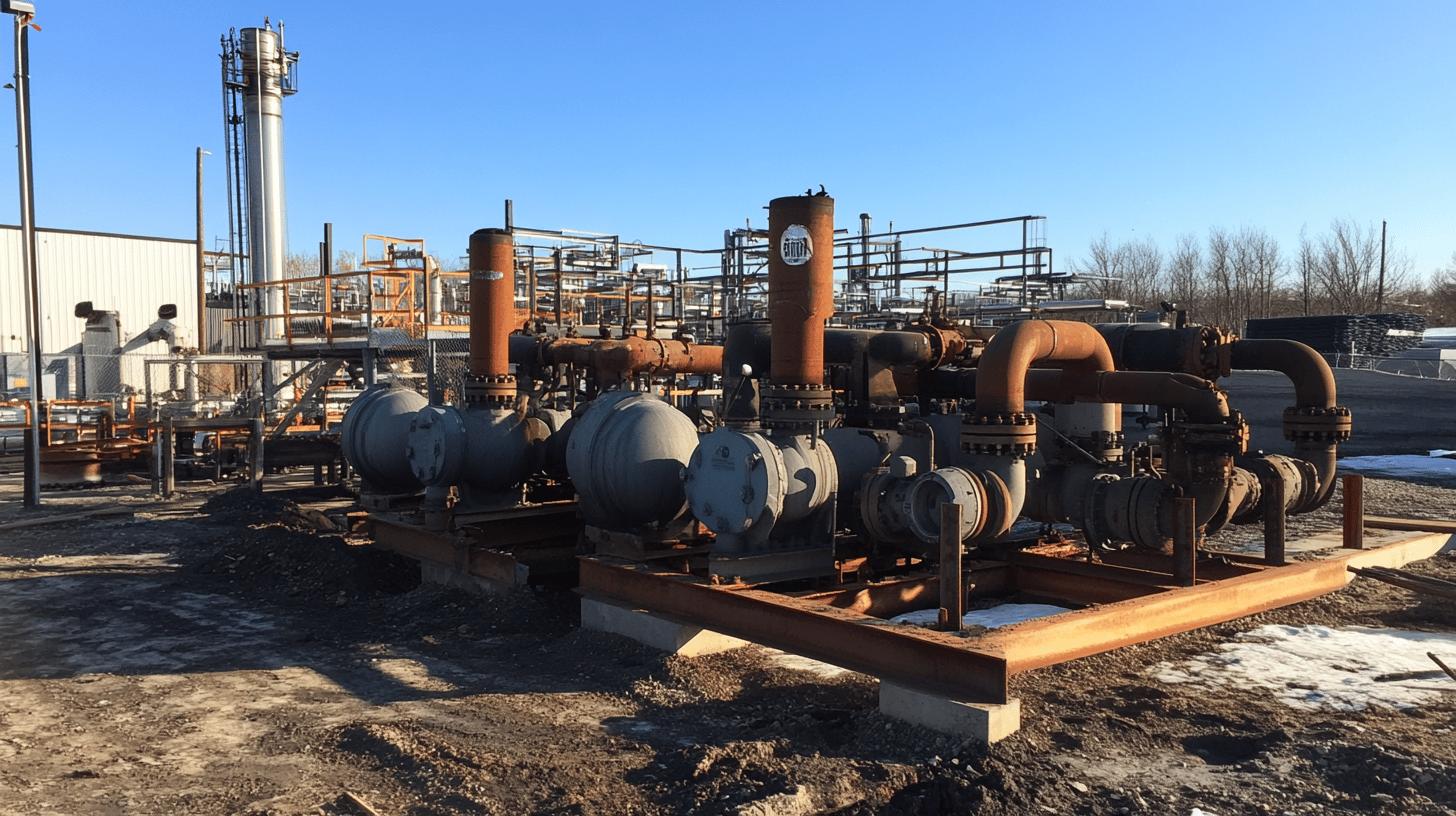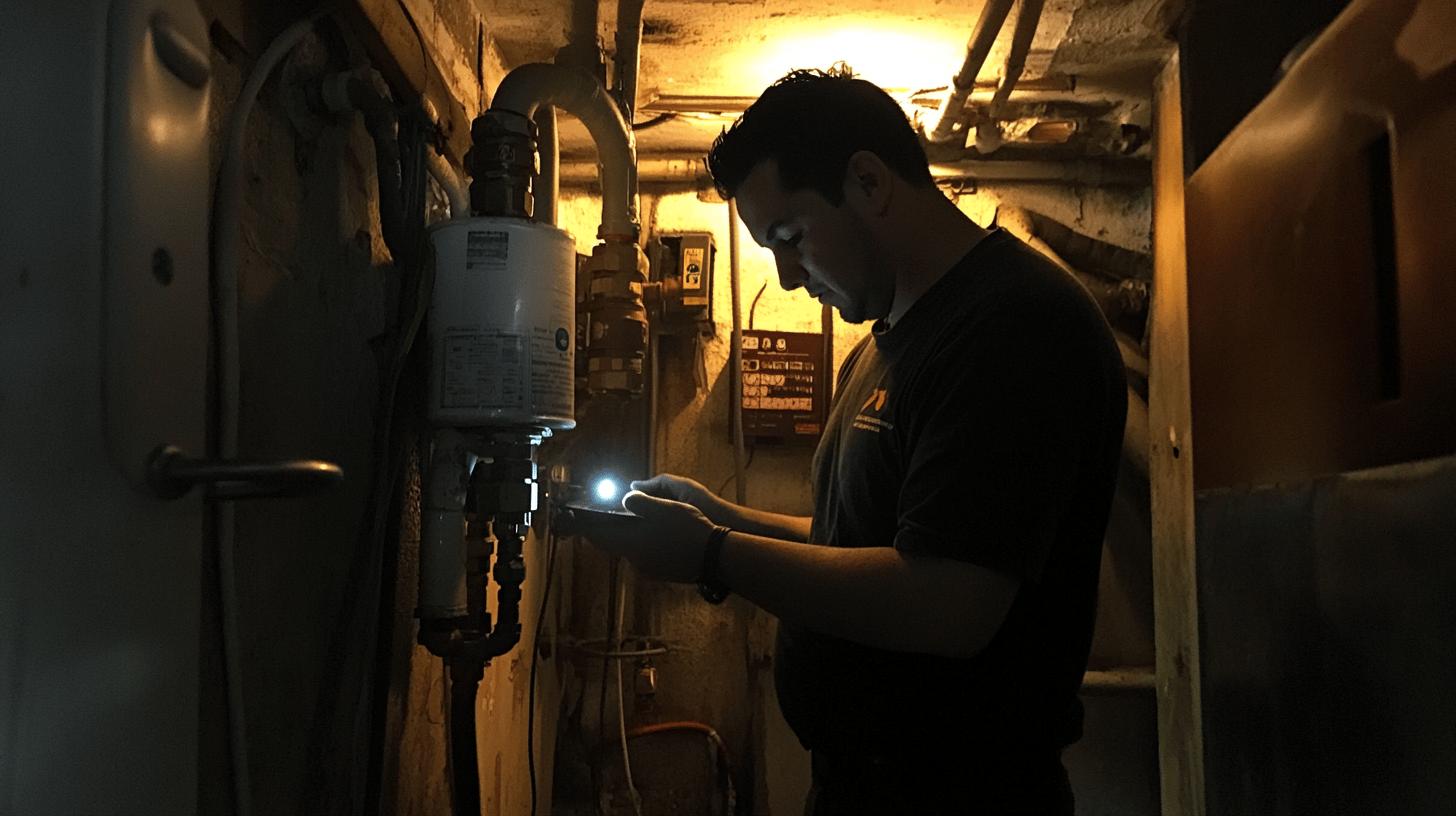TL;DR:
- Proper piping design and alignment are crucial for optimal performance and longevity.
- Follow codes like B31.3 (Process Piping), B31.4 (Liquid Pipelines), and B31.8 (Gas Pipelines) for safety.
- Key factors for alignment: minimize turbulence, ensure support, account for thermal expansion, select materials, conduct stress analysis.
- Material selection impacts durability; choose based on temperature, pressure, and exposure (e.g., stainless steel for corrosion resistance).
- Efficient pump piping should have short, straight runs; maintain 5-10x pipe diameter straight run before pumps.
- Regular maintenance includes visual inspections, pressure testing, and using digital monitoring for predictive maintenance.
Are your pipes working as well as they should, or are hidden issues slowing them down? Understanding piping best practices can help you get the most out of your systems, making them more efficient and durable. This guide covers important aspects of piping design and alignment, which are key to avoiding expensive mistakes and improving performance. Learn how following established codes, reducing system stress, and using modern design tools can change the way you think about plumbing. Whether you’re a pro or just interested in the field, these practices will help you maximize your system’s performance.
Piping Best Practices for Optimal Performance
Getting the design and alignment of your piping systems right is super important for keeping everything running smoothly and avoiding problems. Following piping codes and standards, like the B31.3 Process Piping Code, helps ensure safety and effectiveness. These codes provide clear rules for designing, building, installing, and inspecting piping systems to meet strict standards for various fluids. Proper alignment is crucial because it reduces stress and boosts performance. If your pipes are misaligned, it can lead to wear, leaks, and even system failures. By making sure everything is lined up correctly, you can make your piping system last longer and work more efficiently.
When assessing optimal piping alignment, several essential factors come into play:
- Minimizing turbulence
- Ensuring proper support
- Accounting for thermal expansion
- Selecting suitable materials
- Conducting regular stress analysis
Reducing turbulence is key to keeping fluid flowing smoothly and minimizing wear on your system’s parts. Proper support helps prevent sagging, and considering thermal expansion is crucial for handling temperature changes without causing stress. It’s also important to choose materials that fit the conditions and types of fluids you’re working with for better durability. Regular stress analysis can help spot potential issues early, allowing for quick fixes.
Modern software is a game-changer for designing piping systems. These tools let engineers conduct detailed flexibility analyses to ensure that pipe layouts meet necessary specifications and can handle operational demands. By simulating different scenarios, they can optimize designs and pinpoint stress points. This technology not only makes the design process more efficient but also increases accuracy in predicting how systems will behave under various conditions, leading to safer and more efficient operations.
Safety Standards in Piping Systems

Safety standards in piping systems are essential for preventing accidents and keeping pipelines intact. These standards lay out the rules and procedures for designing, building, installing, testing, and inspecting piping systems. Following these guidelines lowers the risk of failures and boosts reliability. It’s crucial to comply with codes like B31.3, B31.4, and B31.8, as they offer a framework for constructing and maintaining pipelines that can handle different operational demands. Often adopted into law, these codes play a significant role in ensuring public safety and protecting the environment.
| Code | Description |
|——-|———————–|
| B31.3 | Process Piping |
| B31.4 | Liquid Pipelines |
| B31.8 | Gas Pipelines |
| B31.8S| System Integrity |
Stress analysis is vital for keeping piping systems safe. It helps spot potential stress points and weaknesses in the system. Regular stress analyses can catch problems before they lead to failures or accidents. This practice is crucial for maintaining pipeline integrity, especially with changing pressure and temperature conditions. When combined with compliance to safety standards, stress analysis ensures that piping systems run safely and efficiently.
Material Selection and Corrosion Prevention
Picking the right materials for piping systems is essential for durability and performance. The material you choose affects how well it holds up against the substances it encounters and how long it lasts under different conditions. Factors like temperature, pressure, and chemical exposure play a big role in this decision. For instance, some materials work best in high-heat environments, while others are better at resisting corrosion. Choosing the right materials ensures your piping system stays functional and safe over time.
- Stainless steel: corrosion-resistant
- Carbon steel: strong and cost-effective
- PVC: lightweight and chemical-resistant
- Copper: excellent thermal conductivity
- CPVC: high heat resistance
- PEX: flexible and easy to install
Preventing corrosion is essential for keeping your piping system in good shape. Some effective methods include using anti-corrosive coatings and cathodic protection. These techniques create a barrier against corrosive elements, lowering the risk of damage. Coatings can be applied inside or outside the pipes, depending on what threats they face. Cathodic protection uses sacrificial anodes to shield the pipes from corrosion. Regular maintenance and inspections are crucial for spotting corrosion early and addressing it quickly. By using these methods, you can extend the life of your piping system and cut down on repair or replacement costs.
Efficient Pump Piping Techniques

Efficient pump piping helps save energy and prolongs the life of pumping systems. To achieve this, it’s important to focus on precision in design, like keeping runs short and straight and using the right sizes. This ensures optimal flow and reduces friction losses. By following specific guidelines, you can boost pump performance and reliability.
Suction Piping Guidelines
Having short and straight suction piping is crucial because it cuts down on friction loss, which improves pump efficiency and saves energy. Ideally, you should keep a straight run of 5 to 10 times the pipe diameter between the pump inlet and any obstructions like valves or elbows. This setup ensures smooth fluid flow and reduces wear on pump components.
For thicker liquids, using larger suction piping helps decrease friction loss. A suction pipe that’s the same size or slightly larger than the pump inlet strikes a good balance between cost and friction loss. This method works well for handling viscous fluids, as bigger pipes can manage thicker flows effectively and prevent extra stress on the pump.
Discharge Piping and Reducer Use
Eccentric reducers are essential for keeping your piping efficient by preventing air pockets. They help maintain a smooth flow by eliminating areas where air can get trapped. When transitioning sizes, make sure to place the flat side of the reducer either on top or bottom, depending on the flow direction, to avoid turbulence and ensure a clear path.
Aligning discharge piping correctly is also important. Proper alignment prevents unnecessary strain on the pump casing, which can lead to premature wear or failure. This alignment helps support the pump casing properly, keeping the system intact and extending the pump’s life.
Using efficient pump piping techniques can lead to benefits like lower energy use and a longer pump lifespan. By focusing on the best suction and discharge configurations, you can improve operations and reduce maintenance costs. These strategies not only enhance pumping system efficiency but also contribute to sustainable and cost-effective infrastructure.
Maintenance and Inspection Practices
Regular maintenance is crucial for stopping leaks and mechanical failures in piping systems. Keeping up with routine checks helps ensure your system stays reliable over the long run. It allows you to spot potential problems early, which cuts down on expensive repairs and extends the lifespan of your system. By sticking to a maintenance schedule, you can protect your investment and keep everything running smoothly.
- Visual inspections for wear and corrosion
- Pressure testing for leaks
- Valve and fitting checks
- Replacing worn or damaged components
- Cleaning and flushing pipelines
Technology greatly boosts maintenance efficiency. Digital monitoring tools help with predictive maintenance by giving you real-time data and analytics to catch issues early. Using these digital solutions streamlines your maintenance efforts and provides insights into system performance, allowing you to manage proactively and cut down on downtime.
Final Words
Getting piping best practices down is key for top-notch system performance. Making sure your design and alignment are on point, while following safety standards, helps reduce stress and improve efficiency. Using proper alignment techniques and sticking to important codes like B31.3 and B31.8 keeps your systems safe and sound.
Choosing the right materials and preventing corrosion are essential for making your piping last longer. Efficient pump piping strategies not only enhance performance but also lower energy use. Plus, regular maintenance and inspections are a must for reliability. By following these best practices, you’ll boost the effectiveness and lifespan of your piping systems.
FAQ
What are piping standards?
Piping standards are guidelines that ensure safe and efficient design, construction, and maintenance of piping systems. Compliance with standards like B31.3, B31.4, and B31.8 is essential for safety and integrity.
What are the basics of a piping system?
The basics of a piping system include design, flexibility analysis, material selection, and adherence to standards. Proper alignment minimizes stress, while regular maintenance ensures performance and longevity.
How do you optimize a piping system?
To optimize a piping system, minimize turbulence, provide proper support, account for thermal expansion, select appropriate materials, and conduct regular stress analysis. These steps enhance performance and longevity.
How can I be a good piping engineer?
To be a good piping engineer, focus on understanding design fundamentals, standards, and material properties. Use modern computing software for design and stay updated with new technologies and best practices.

